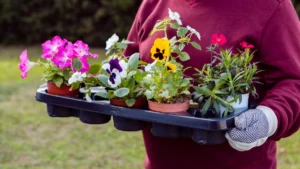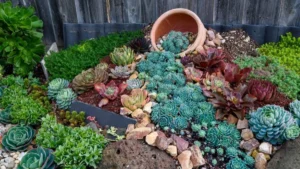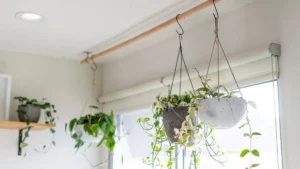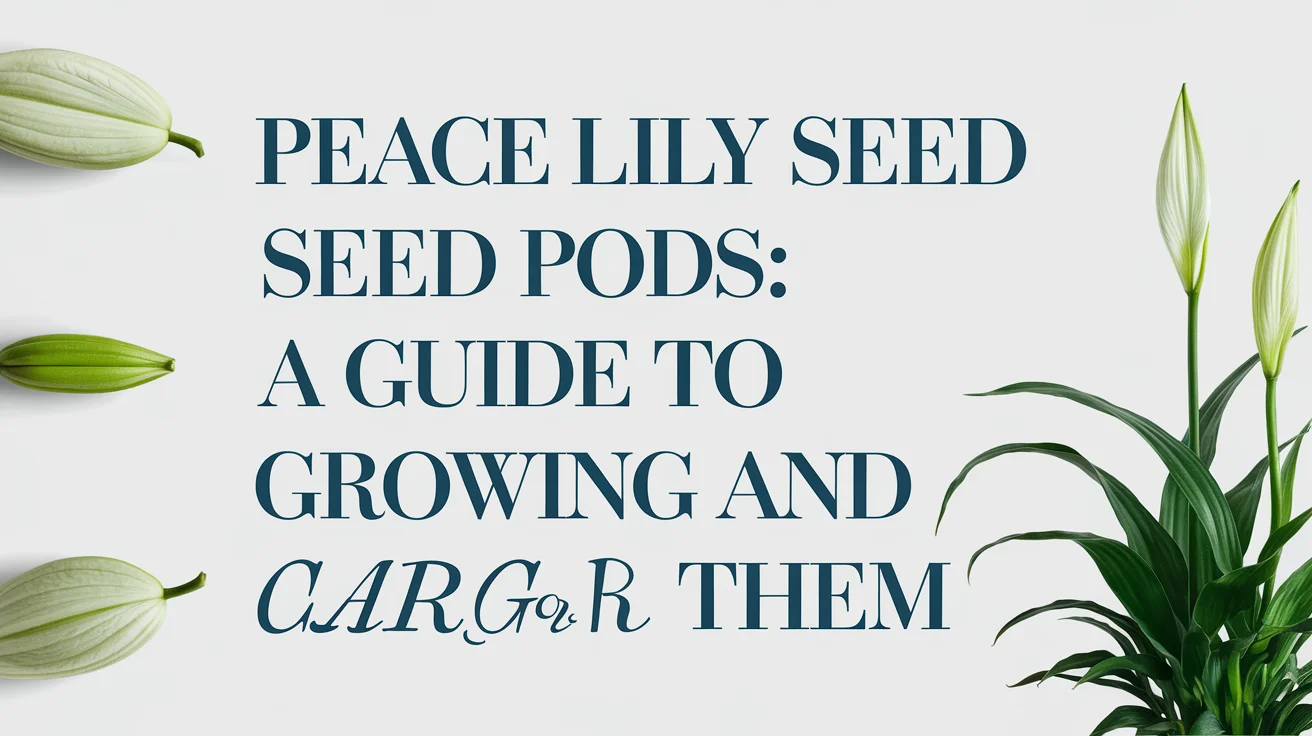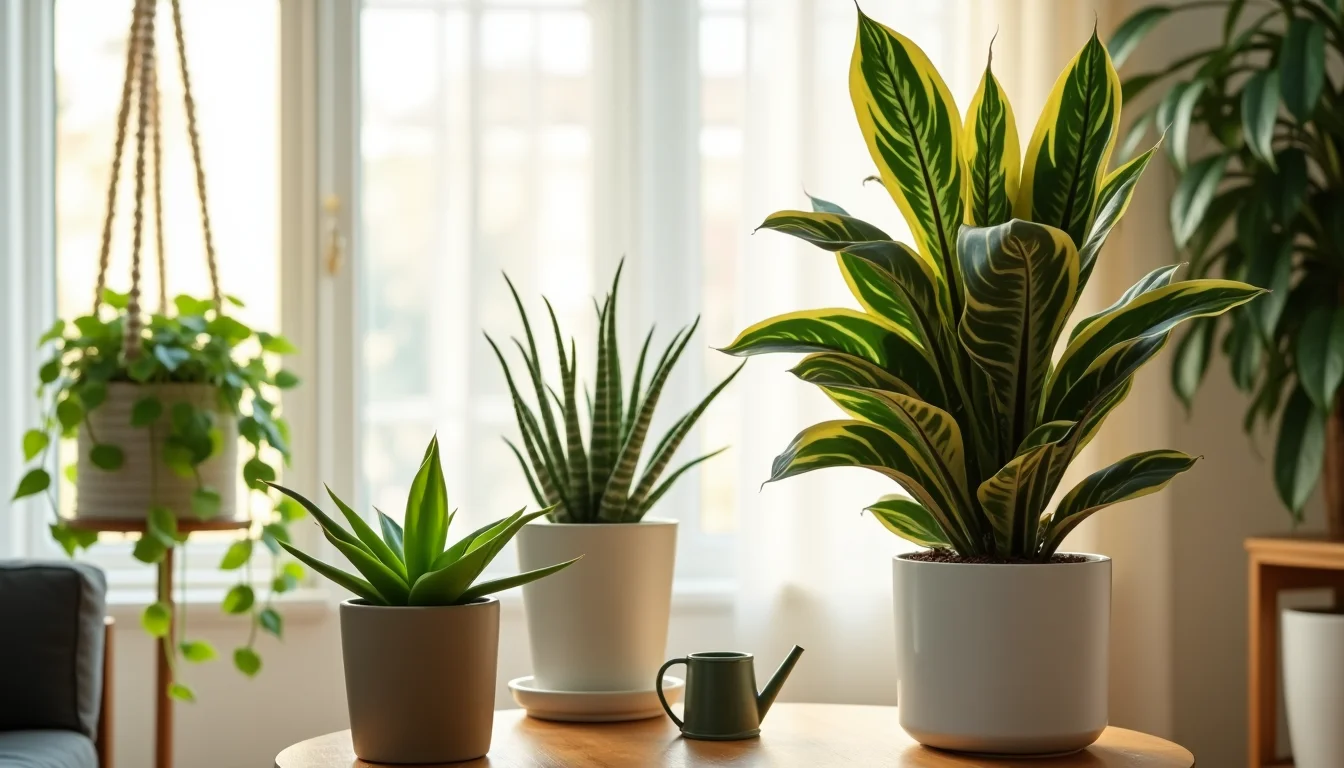Pitaya, commonly known as dragon fruit, is not only beautiful but also surprisingly easy to grow. Whether in pots or gardens, with the right approach, it thrives and produces stunning fruit. This complete guide on pitaya plant care walks you through how to grow, maintain, and harvest your plant effortlessly.
Caring for a pitaya plant means understanding its tropical needs, from sunlight to soil. With some thoughtful planning, even beginners can enjoy healthy vines and sweet fruits. Plus, this guide helps you avoid mistakes many new growers make.
If you’re planning to start your dragon fruit plant or already have one struggling to grow, this care routine gives you a straightforward approach that ensures success and fruiting.
Pitaya Plant Care Basics – Soil, Water & Light Requirements
For pitaya to grow well, a few conditions are non-negotiable: proper light, good drainage, and the right watering schedule. These are the three pillars of dragon fruit care.
Pitaya loves full sunlight. At least six to eight hours a day helps its vines grow strong and fruitful. Next is soil. Sandy or loamy soil with high drainage is ideal. Never let the roots sit in water it causes rot. Finally, water your plant deeply but infrequently. Overwatering kills pitaya faster than anything else.
Best Practices for Pitaya Plant Growth & Support
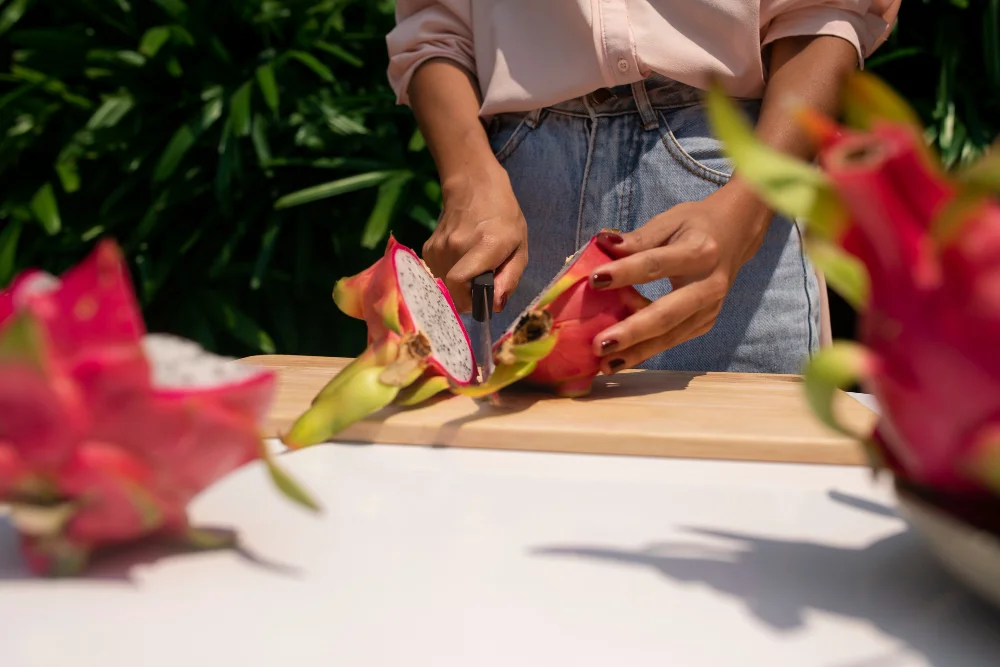
Pitaya plants are climbers and need vertical support to grow upright. You’ll often see them supported by concrete poles or trellises, especially on farms.
Using support structures keeps the plant stable and allows it to grow vertically, which is essential for flowering and fruiting. Trellises, poles, or even sturdy fences can work if appropriately secured. Also, remember to prune regularly for airflow and health.
Growth Boosting Tips for Pitaya Plant Care
- Fertilize monthly with balanced fertilizer (10-10-10)
- Use sulfur or copper-based fungicide in humid seasons
- Remove dead or diseased stems promptly
- Hand-pollinate flowers in low-bee areas for better fruiting
- Mulch base lightly to retain moisture, but avoid root rot
Pitaya in Pots – Indoor and Small Space Dragon Fruit Growing
Don’t have a backyard? No problem at all. Pitaya plant care is flexible enough to adapt to indoor or small space gardening. This climbing cactus can thrive in large containers as long as you provide the right conditions. Choose a pot with good drainage holes and fill it with a well-draining medium like cactus mix or sandy loam.
The ideal pot size should be at least 15–20 gallons to allow for proper root expansion and growth. Once your plant is settled in its container, give it the support it needs. Install a sturdy trellis or wooden stake in the centre of the pot to help guide its climbing stems.
Position the pot in the sunniest area of your balcony, terrace, or indoor space near a bright window. Rotate the pot occasionally to ensure even sun exposure. With proper care and attention, potted pitaya can bloom and fruit beautifully even without a garden.
Common Pitaya Plant Problems and How to Fix Them
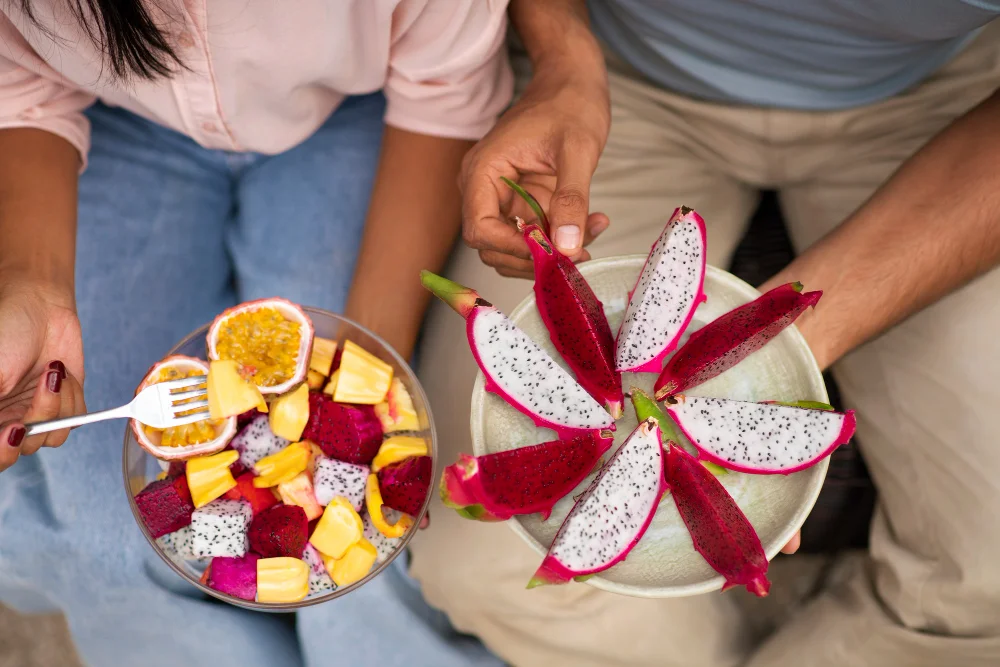
Dragon fruit plants can still face challenges even with care. If leaves turn yellow or fruits don’t form, it’s time to troubleshoot your routine.
Overwatering is the most common issue. Root rot sets in quickly if drainage is poor. Another common problem is a lack of pollination, especially indoors or in low-insect areas. If your pitaya isn’t blooming, it may not be getting enough sunlight.
How to Fix Pitaya Plant Issues Quickly
- Reduce watering if the soil stays soggy for more than 24 hours
- Increase sunlight exposure to 8 hours daily
- Add organic compost to improve soil nutrients
- Support flower formation with potassium-rich feed
- Hand-pollinate for better fruit production in small gardens
Seasonal Pitaya Plant Care – What to Do in Each Climate Phase
Pitaya needs different care depending on the time of year. Understanding these changes helps the plant remain productive all year.
During summer, the plant thrives and grows rapidly. Water more during hot, dry months, but keep the soil well-drained. In monsoon or humid conditions, cut back watering and watch for fungus. In winter, growth slows, so reduce all inputs: no fertilizer and minimal water.
Propagating Pitaya Plants from Cuttings – The Easiest Method
Propagating pitaya is much easier than growing from seeds. Cuttings grow faster and are genetically identical to the parent plant, which means quicker fruiting.
Take a healthy stem cutting around 12 inches long. Let it dry for 3–5 days until the cut end is calloused. Then plant it in sandy soil about 2–3 inches deep. Keep it in indirect light and lightly moist for 2 weeks until roots form.
Organic Pitaya Plant Care Routine – Natural and Chemical-Free
Going organic with your pitaya plant care not only supports healthier growth but also keeps your fruit chemical-free and garden eco-friendly. This tropical cactus thrives when given nutrient-rich, natural treatments that enhance soil life and sustainably protect against pests.
Best Organic Methods for Pitaya Plant Care
- Use compost or well-rotted manure to enrich the soil naturally
- Apply neem oil as a gentle pesticide to prevent fungal issues
- Sprinkle wood ash for calcium and potassium without synthetic fertilizers
- Try fish emulsion for an organic nitrogen boost
- Mulch with straw, leaves, or coconut husk to conserve moisture and suppress weeds
How to Maximize Pitaya Flowering and Fruiting
Encouraging your pitaya to bloom and fruit requires time and the proper care strategy. Most plants flower within 8 to 12 months if grown from healthy cuttings and maintained well.
To boost flowering, focus on pruning regularly and avoiding overwatering. During blooming season, switch to phosphorus-rich fertilizers and hand-pollinate flowers early in the morning or at night for better fruit set.
Conclusion
Pitaya plant care doesn’t have to be overwhelming. With just a few easy adjustments, you can grow vibrant, healthy dragon fruit plants in your garden or even on a rooftop. The key is consistency, sunlight, and avoiding overwatering.
Growing your pitaya is a rewarding experience. The plant is resilient, beautiful, and gives you stunning, exotic fruits with a tropical taste. Plus, it’s a fun project for gardeners of all skill levels.
Start small, care smartly, and soon you’ll enjoy the beautiful blooms and fresh dragon fruit from your very own pitaya vine. Whether you grow one or several, the process is just as enjoyable as the harvest.





